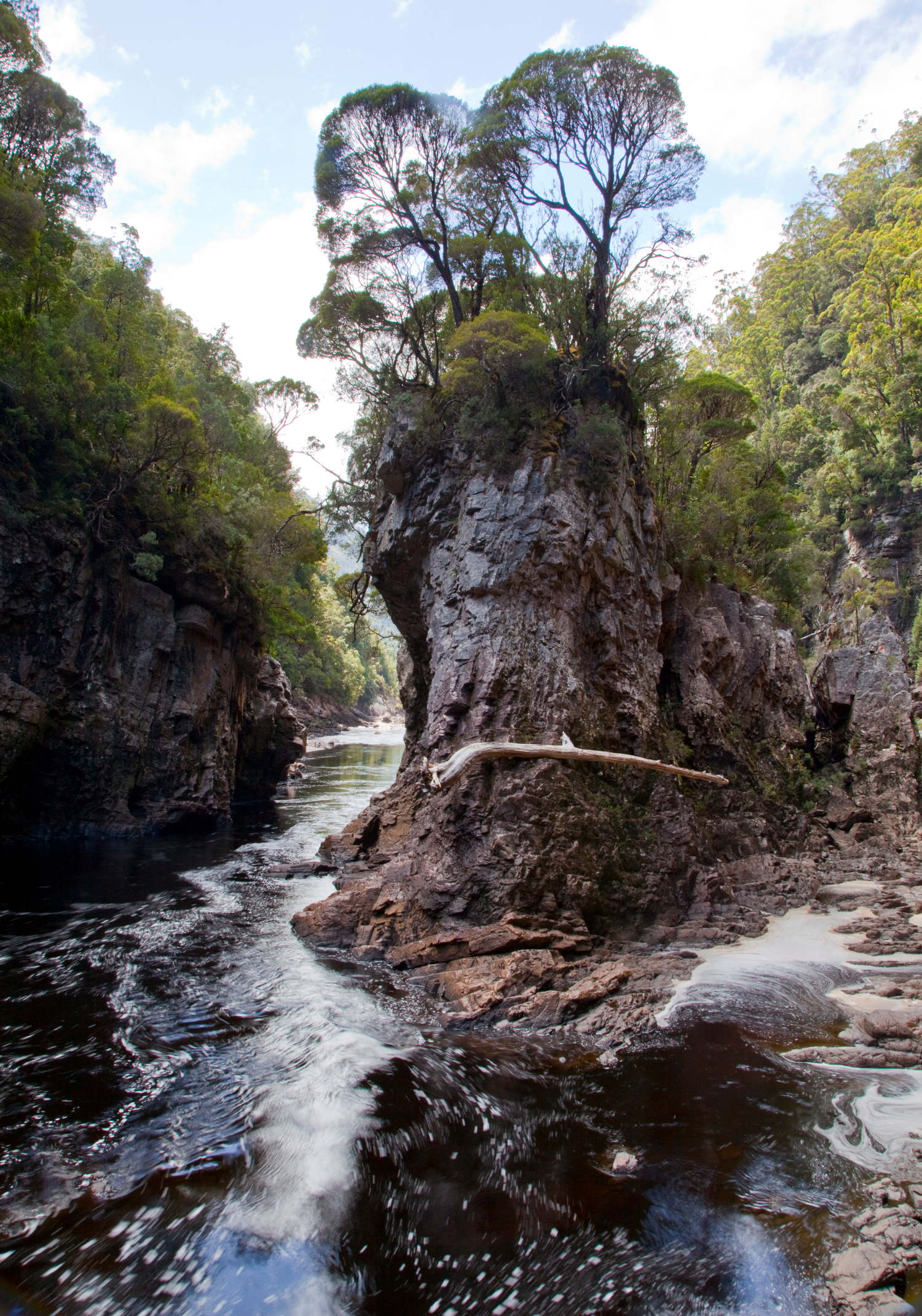From its headwaters in the alpine lakes of the Cheyne Range until its confluence with the Gordon River some 130 km later, the Franklin River flows through a wilderness national park. You will see no dams, buildings or cars; in fact there is no permanent human habitation in its catchment. The banks are lined by temperate rainforest punctuated by rock formations and small beaches, while the air is some of the cleanest in the world.

The Tasmanian Wilderness World Heritage Area (TWWHA)
The Franklin – Gordon Wild Rivers National Park lies in the heart of the Tasmanian Wilderness World Heritage Area. It is a region of dramatic mountain peaks, beautiful temperate rainforest, deep river valleys and spectacular gorges. The park is famous for the wild and pristine rivers that twist their way through the wilderness.
Modern inflatable Rafts offer a low impact and comfortable means of travel through this sensitive environment. On your whitewater rafting expedition you will experience surging rapids, tranquil gorges and pristine temperate rainforests of myrtle, leather wood and the ancient huon pine. Native wildlife, including platypus, wallabies, quolls (marsupial tiger cats), yellow-tailed black cockatoos and white-breasted sea eagles are often encountered.
The Franklin River carves its way through some of the most beautiful, rugged and inaccessible wilderness in the world. Over 30 Years ago, during the heat of the epic conservation battle to save the Franklin River from getting flooded, its outstanding universal value was appreciated by the UNESCO. A conglomerate of national parks, comprising Cradle Mountain-Lake St Clair, Franklin-Lower Gordon Wild Rivers and Southwest, was inscribed on the World Heritage List in 1982 and named Western Tasmanian Wilderness National Parks. It was renamed Tasmanian Wilderness in 1989.
The Tasmanian Wilderness satisfies an outstanding seven out of ten selection criteria for the UNESCO World Heritage List.
“In a region that has been subjected to severe glaciation, these parks and reserves, with their steep gorges, covering an area of over 1 million ha, constitute one of the last expanses of temperate rainforest in the world. Remains found in limestone caves attest to the human occupation of the area for more than 20,000 years. …”
“… Features of outstanding significance include extensively glaciated landscapes; undisturbed habitats of plants and animals that are rare, endangered and/or endemic that represent a rich variety of evolutionary processes; magnificent natural scenery and an impressive assembly of Aboriginal sites that include cave art. …”
Source UNESCO World Heritage List, Tasmanian Wilderness
“… The Tasmanian Wilderness World Heritage Area conserves a diverse array of both natural and cultural features of outstanding global significance. As one of only three remaining temperate wilderness areas in the southern hemisphere, the region provides pristine habitats for a range of plants and animals that are found nowhere else in the world, including many rare and endangered species. For a number of animals which have become extinct on the mainland in recent times, the area offers a last refuge. The World Heritage Area is the Australian stronghold of temperate rainforest and alpine vegetation. Its landforms are of immense beauty and reveal a rich and complex geology. Aboriginal occupation extending back beyond 36 000 years, combined with nearly two centuries of European settlement, have created a legacy of humanity’s interaction with the wilderness.
The Tasmanian Wilderness World Heritage Area offers all people, for all time, the opportunity to seek joy and inspiration amidst the untrammelled grandeur of nature, and refuge from an increasingly artificial world. It is waiting for you to discover it, and, perhaps, discover a part of yourself.”
Source PWS Franklin- Gordon Wild Rivers National Park

